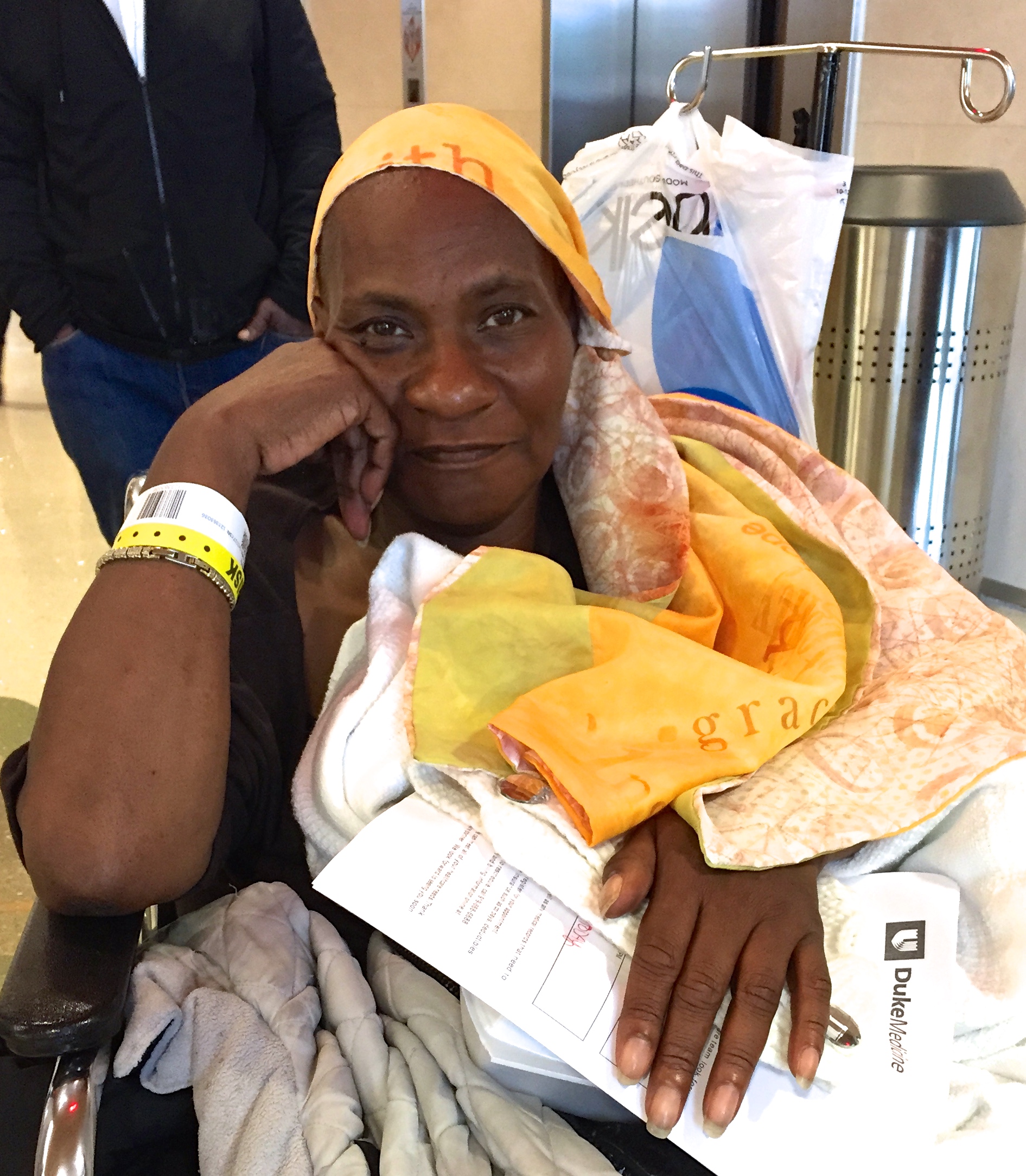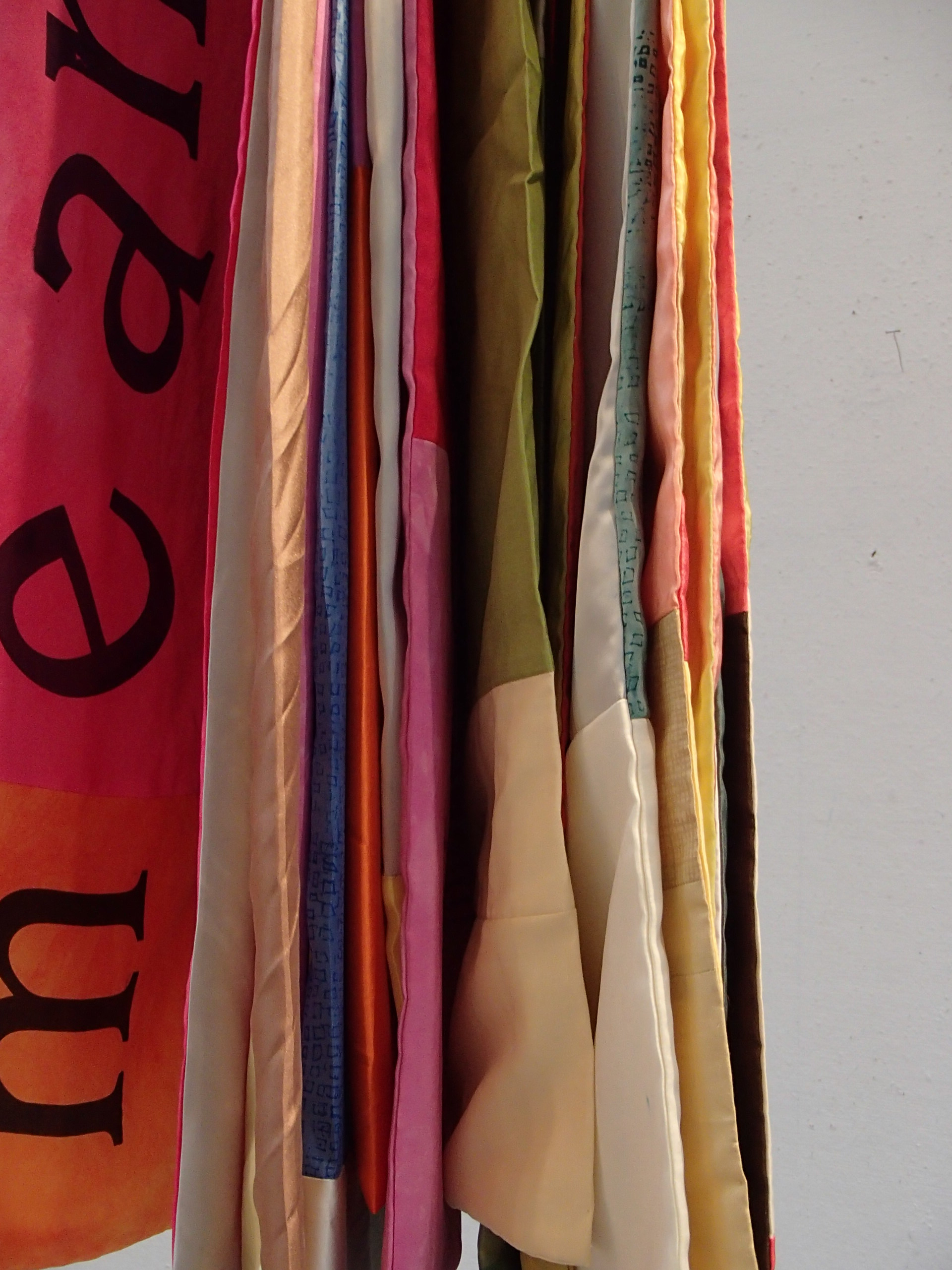Edition 1
Over the course 2014 and 2015, I implemented and led Wrap Your Head Around It: a collaborative and interdisciplinary arts project that linked text textile through community action. Ultimately, 200 hand dyed and printed scarves were distributed through cancer support organizations directly to cancer patients, caregivers, and survivors.
“We all have a cancer story through personal experience or through the experience of a friend or loved one. The interlocking creation of writers, painters, dyers, stitchers all contributing to making scarves of full beauty and truth is an earnest statement of solidarity with women living with and surviving cancer.”
How did Wrap Your Head Around It work?
This collaborative textile experience began with guided writing sessions and ended in wearable art. The many stages included: writing sessions; surface design workshops; scarf construction; public gallery exhibition; and scarf distribution. Partnerships were wide ranging and included medical centers, colleges and universities, textile business, art galleries, and cancer support groups.
“My art making practice is focusing in the discipline of fiber arts and is fueled by collaboration and improvisation. I work with all ages and abilities and look for creative opportunities to combine text with textile. I enjoy working with North Carolina’s diverse populations and helping them unlock their stories as they share ideas and materials.”
Writing Sessions
Under the direction of poet Grey Brown at Duke University Cancer Patient Support Programs, cancer patients, caregivers, and survivors explored personal narrative and collective experience through writing. Excerpts and phrases from group poems were borrowed and adapted as “community word offerings” for use as text on fabric for scarves.
“Word play has been essential to my art making process; I work with professional writers often and Wrap included the skillful and sensitive leadership of poet Grey Brown, a leader in the national arts and healthcare movement. Grey has been writing with a variety of patient populations at Duke University Hospital for over 20 years.”
Surface Design Workshops
I facilitated multiple sessions of dye and print workshops in which participants helped prepare silk with color, pattern and “community word offerings.” Partnering groups in surface design workshops included: art students at Meredith College, North Carolina AT&T State University and Elon University. Community artists from the NC triangle region, WRAP Kickstarter supporters, and cancer community members also participated. Semi-private workshops were also held in my studio.
“I believe that cloth has huge narrative potential as well as the power to heal when activated with artistic intent. When text becomes textile remarkable things can happen.”
Scarf Construction
I conducted multiple stitching sessions with experienced textile artists to piece together the scarves. Community stitching workshops were held at Mulberry Silks & Fine Fabrics in Carrboro, NC and at Spoonflower, a custom fabric and design business, in Durham, NC.
“I believe creating 200 art scarves with and for cancer patients, caregivers, and survivors is a loving and vital collective action that can assist women working through fragile and challenging health issues.”
Public Exhibitions
Public exhibitions of sixty of the finished scarves were mounted—in banner style display along with multi-media documentation of the entire project—at Frank Gallery in Chapel Hill, NC and at Duke Hospital in Durham, NC.
Peg Gignoux and Grey Brown speaking at Wrap's launch party at LIGHT Art & Design
“Blending words, stirring up vibrant colors, and piecing cloth together carries the potential to touch and transform lives, to promote community, and to help participants be reminded of their vitality through the creative process.”
Scarf Distribution
Scarfs were distributed to individuals in the cancer community in a variety of ways: social workers at the Duke Cancer Support Center worked to identify individual recipients of scarves through a registration process (adhering to HIPAA regulations); each participant in any stage of creations (writing, dying, printing, stitching) was able to register to assign a scarf to a cancer patient or survivor or caregiver they were personally connected with; and scarves were distributed through Sisters Network Triangle NC and Cornucopia House, two community-based cancer support organizations.
“Once released into the community, these scarves will be understood not only as public art action but also valued in a powerful intimate context.”

































